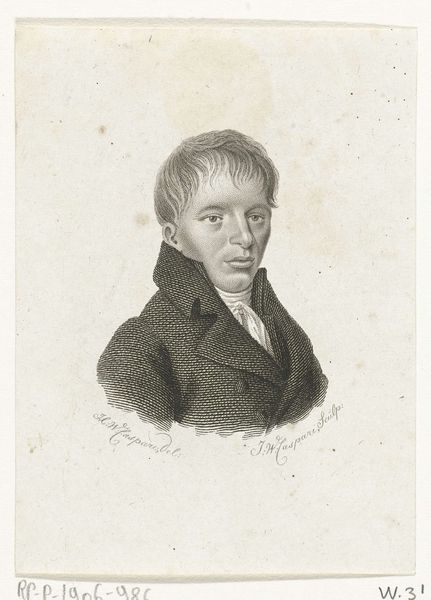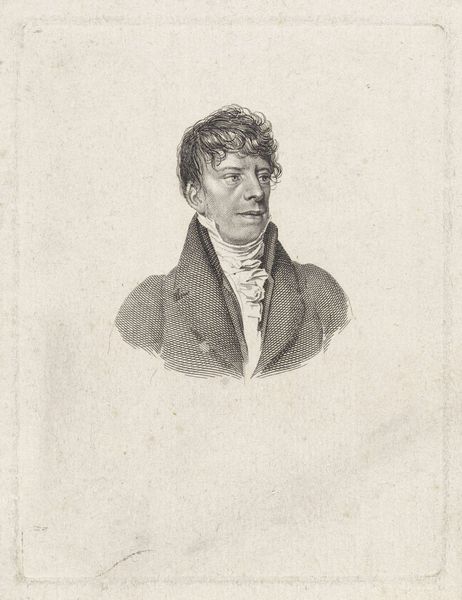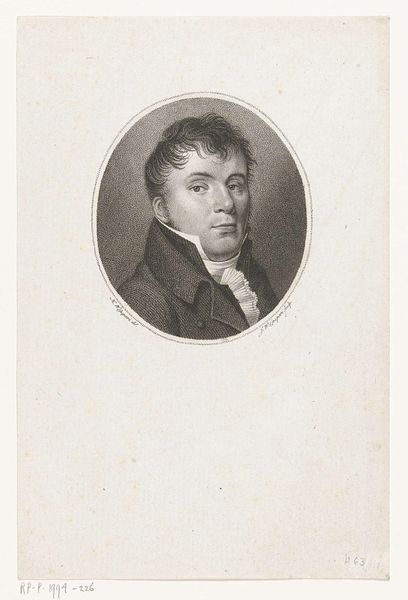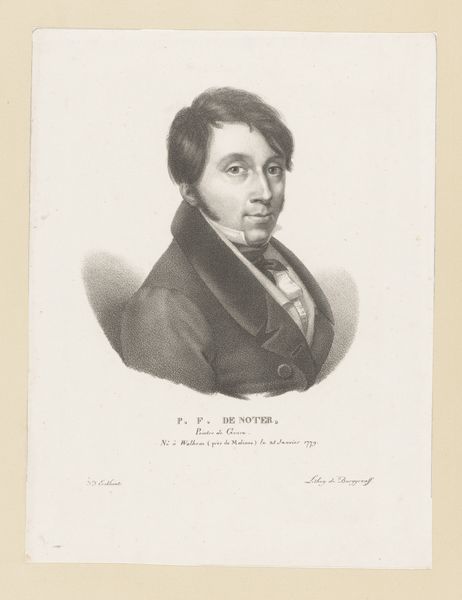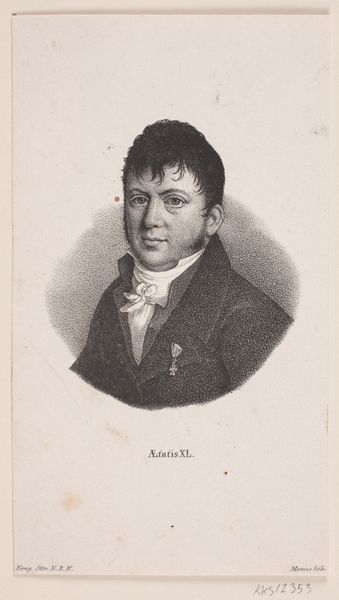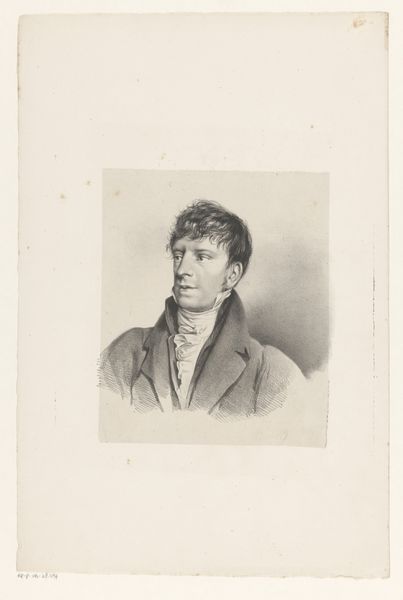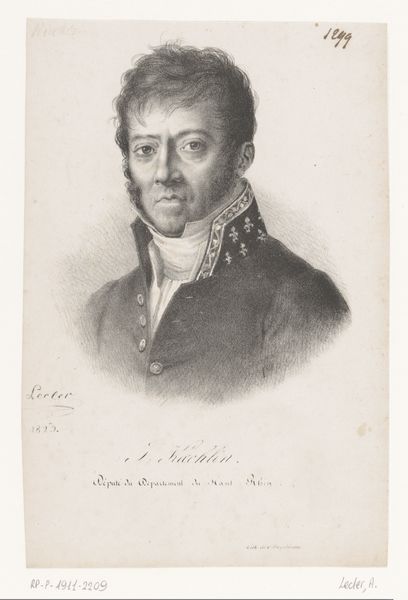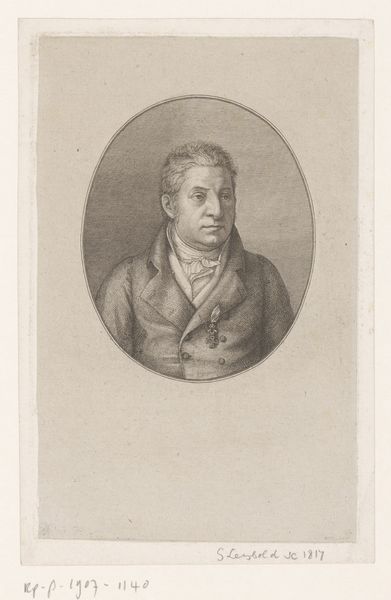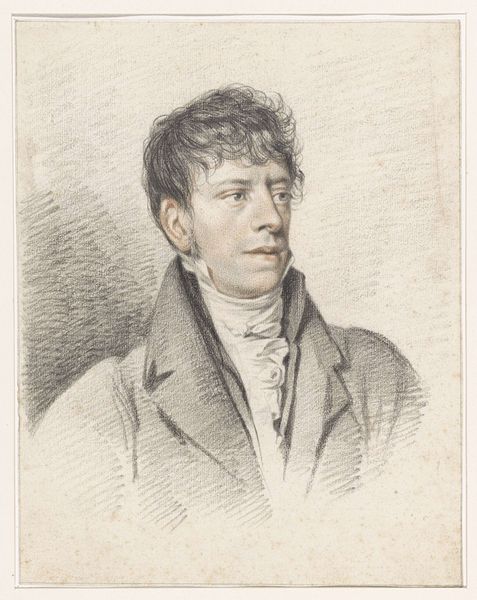
print, engraving
#
portrait
#
neoclacissism
# print
#
19th century
#
engraving
Dimensions: height 205 mm, width 136 mm
Copyright: Rijks Museum: Open Domain
Curator: Immediately, I notice a certain austere formality. It’s not an overtly imposing image, but there’s something serious about the subject's gaze. Editor: Indeed. And in terms of material presence, there's a distinct subtlety to the engraving—Hendrik Roosing's "Portret van de predikant Jst. Th. Jan van Goens" from between 1786 and 1826, now housed at the Rijksmuseum—projects a quiet sophistication despite the modest means. Curator: Absolutely. And as a print, it's inherently imbued with the symbolism of accessibility, the democratizing effect of reproduced imagery in the age of enlightenment, extending the influence of this particular minister far beyond his immediate sphere. Notice also the Oval shape of the frame in which the person sits— it is very interesting as it brings together eternity and also limitation, as it contains a certain person in the world, with a clear, delineated edge. Editor: Good point! It reminds us of how printed matter also relies on specific craft networks— engravers, printers, distributors— whose labour enabled this specific clergyman's image to spread. It seems as though labor facilitated the rise and propagation of middle-class values via the dissemination of such images during this time. Curator: Right, and the way he's rendered also speaks volumes about the values being promoted. The relative plainness of the garments contrasts with the ornate ruffles at the collar, creating a visual balance, suggesting an integration of earthly concerns with spiritual devotion, perfectly embodying the Neoclassical tension. The stern facial expression and the somewhat tousled hair suggest moral uprightness as well as direct connection with God—unfiltered. Editor: I think you are right, though I am also curious about who would acquire this sort of print. It would signal an allegiance, perhaps to a certain faction in the Dutch Reformed Church or a community subscribing to particular socio-political ideas and norms propagated through his teachings— which is perhaps an instance of consumption solidifying social ties and distinctions during a period of increasing print proliferation. Curator: Fascinating how a simple portrait can unveil such intricate cultural currents! Thank you for offering me the social perspective. Editor: A pleasure. It helps us both to fully apprehend how visual technologies impact ideology.
Comments
No comments
Be the first to comment and join the conversation on the ultimate creative platform.
